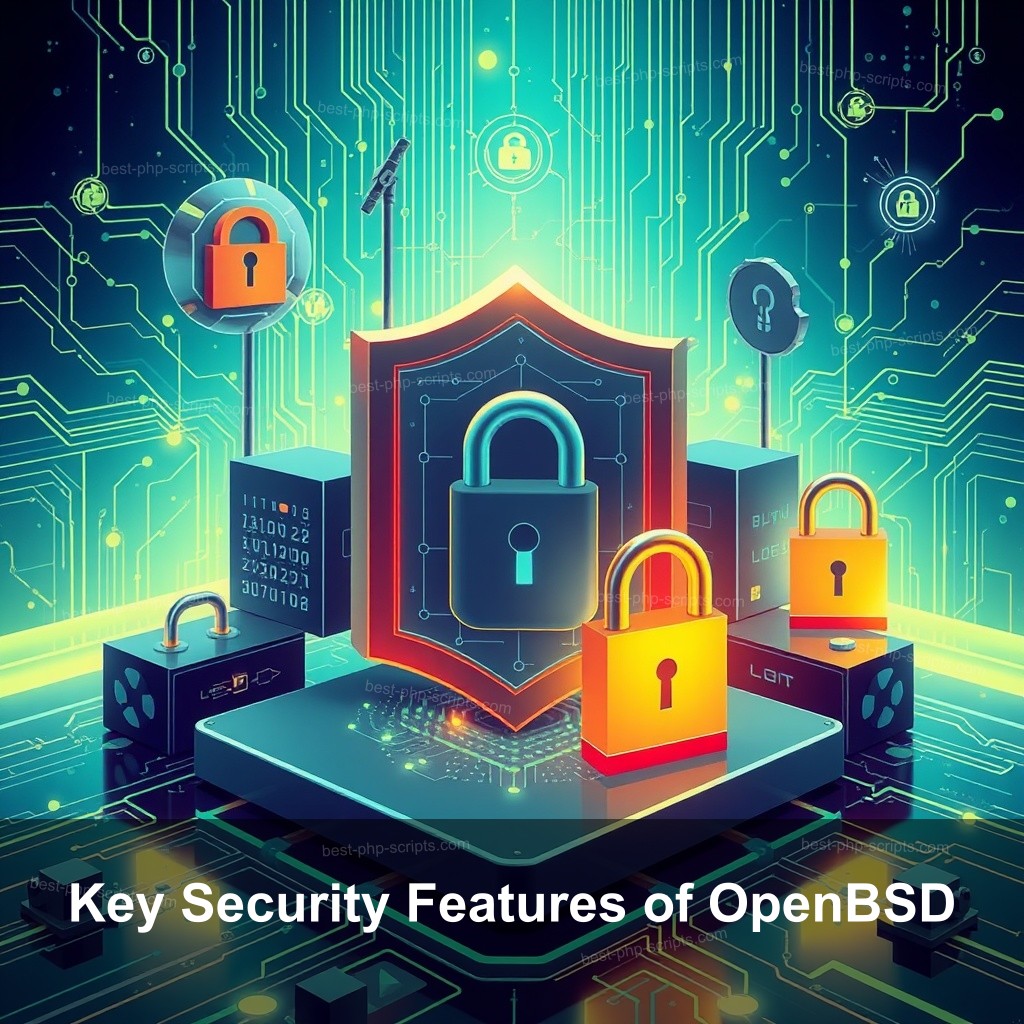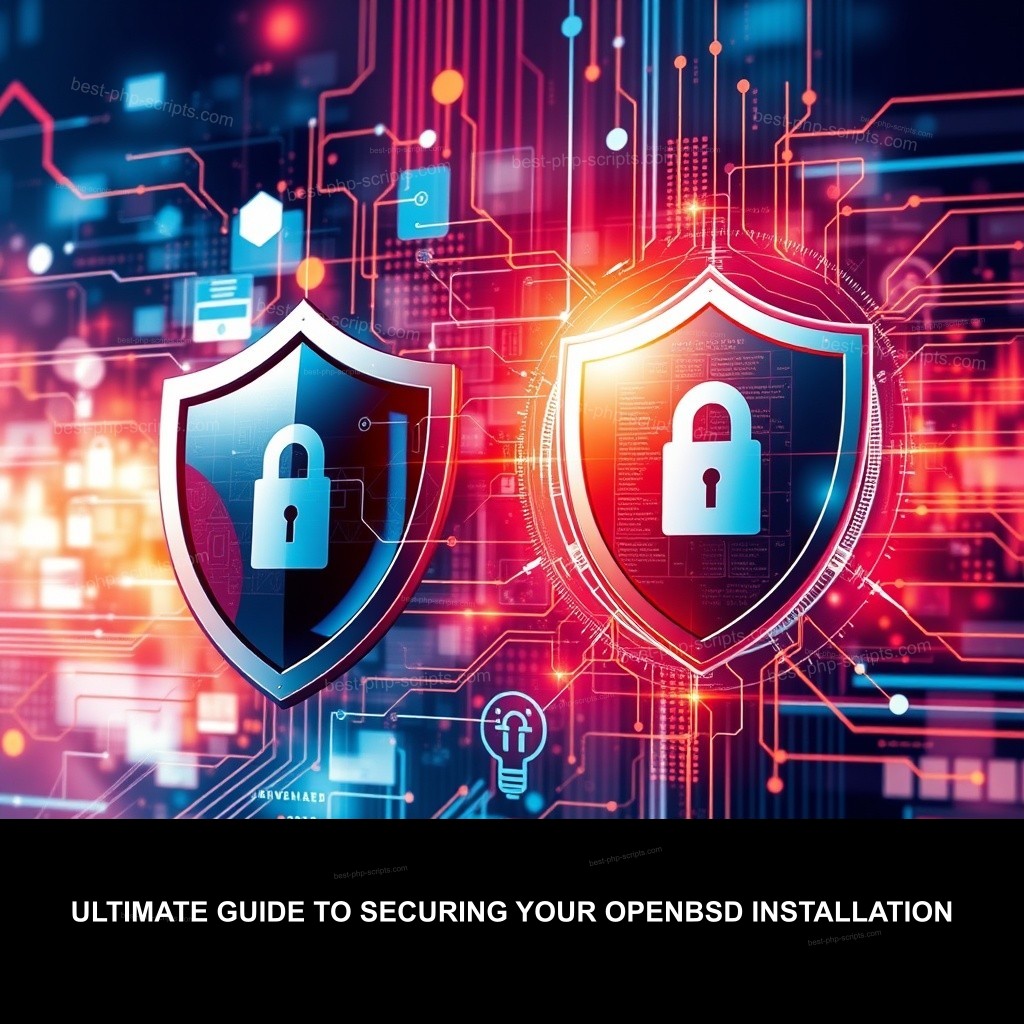Are you looking to bolster the security of your OpenBSD installation? With the increasing threat of cyber attacks, it’s more important than ever to ensure your system is secure. In this guide, brought to you by Best PHP Scripts, we will explore the important aspects of OpenBSD security, including key features, best practices, and actionable steps to enhance your server’s defenses.
Introduction to OpenBSD Security
Strong security capabilities and dedication to system safety define OpenBSD. Anyone trying to protect their OpenBSD installation must first grasp its security concepts. This part will go over the fundamental security ideas that direct OpenBSD evolution and the value of security for its users.
| Security Principle | Description |
|---|---|
| Proactive Approach | Security is an integral part of the development process. |
| Minimal Attack Surface | Default configurations minimize vulnerabilities. |
| Regular Updates | Continuous patching to protect against threats. |

Key Security Features of OpenBSD
In this section, we will examine the various security features that OpenBSD offers, showcasing how they work to protect your system.
Built-in Security Mechanisms
Several built-in security mechanisms included in OpenBSD guard the operating system from different hazards. Among these are the potent firewall the Packet Filter (pf). It greatly enhances network security by allowing users to set policies controlling the permitted traffic entering or leaving the system.
System Hardening Techniques
Hardening your OpenBSD installation is key to minimizing potential vulnerabilities. This includes disabling unnecessary services and ensuring that only essential ports are open. For instance, by employing tools like sysctl, you can configure kernel parameters that boost security.
Regular Security Updates and Patching
Keeping your OpenBSD system updated is critical to maintaining its security integrity. Regular updates patch known vulnerabilities and enhance the overall performance of the system. The syspatch utility simplifies this process, allowing users to apply patches easily.
How to Secure an OpenBSD Server
Securing a server running OpenBSD requires careful planning and execution. This section will provide a practical approach to ensuring your server is well protected.
Initial Installation Security Practices
When setting up your OpenBSD server, start with a secure installation. Follow best practices, such as configuring your firewall rules during the setup process. The pf.conf file allows for customized firewall settings suited to the specific needs of your server.
User Management and Permissions
Maintaining security calls for good user management. Limit rights for many users using role-based access restrictions. This reduces the possibility of unintentional modifications or deliberate acts endangering the system.
Monitoring and Logging Security Events
Implementing robust monitoring and logging practices can help you identify suspicious activities on your OpenBSD server. Tools such as syslog can be configured to log important events, making it easier to review actions taken on the system.
Best Security Practices for OpenBSD
Implementing best security practices is crucial for any OpenBSD user. This section will cover necessary strategies to maintain high security standards.
Implementing Firewall Rules
Firewall rules should be a fundamental aspect of your security strategy. The OpenBSD pf allows for detailed rule sets that can be matched to the specific requirements of your network environment. Regularly review and update these rules to adapt to changing security needs.
Utilizing Encryption for Data Protection
Encryption plays a significant role in securing sensitive data. OpenBSD offers strong encryption mechanisms, including disk encryption options that protect data at rest. Consider implementing these features as part of your overall security strategy.
Regular Security Assessments
Conducting regular security assessments using tools like nmap or OpenVAS can help identify potential vulnerabilities in your system. Staying proactive about security enables you to address issues before they can be exploited.

Advanced Security Techniques
Advanced techniques can provide an additional layer of security to your OpenBSD installation. This section will explore several strategies to improve your server’s defenses.
Utilizing Virtualization for Enhanced Security
Virtualization can effectively isolate applications and limit the impact of security breaches. OpenBSD’s built-in virtualization features allow you to run applications in separate environments, thereby reducing risks to your main system.
Implementing Intrusion Detection Systems
Intrusion Detection Systems (IDS) can monitor network traffic for suspicious activity. Consider using solutions like Snort or Suricata that integrate well with OpenBSD, giving you insights into potential threats.
Community Resources for OpenBSD Security
The OpenBSD community is an invaluable resource for security practices. Engaging with forums and discussions can provide insights into current security challenges and solutions. Collaborative efforts often lead to improved security measures and techniques.
FAQ
What are the key features of OpenBSD security?
OpenBSD is known for its proactive security approach, which includes built-in features like the Packet Filter (pf), strong encryption options, and a commitment to regular updates.
How can I secure my OpenBSD server?
Securing your OpenBSD server involves implementing firewall rules, managing user permissions, and regularly monitoring system activity.
What is the importance of regular updates in OpenBSD?
Regular updates are important for patching vulnerabilities and ensuring your system maintains the latest security enhancements.
How does OpenBSD handle user management?
OpenBSD allows for fine-grained user management through role-based access controls, helping to minimize the risk of unauthorized actions.
Can I use encryption in OpenBSD?
Yes, OpenBSD provides strong encryption options for data protection, including disk encryption to secure sensitive information.
Conclusion
Securing your OpenBSD installation is not just about implementing tools; it’s about creating a culture of security. By following best practices, staying informed, and utilizing the resources available, you can protect your system effectively. Remember to engage with the community and share your experiences. Explore more about security on OpenBSD installation guide, OpenBSD best practices.

Leave a Reply